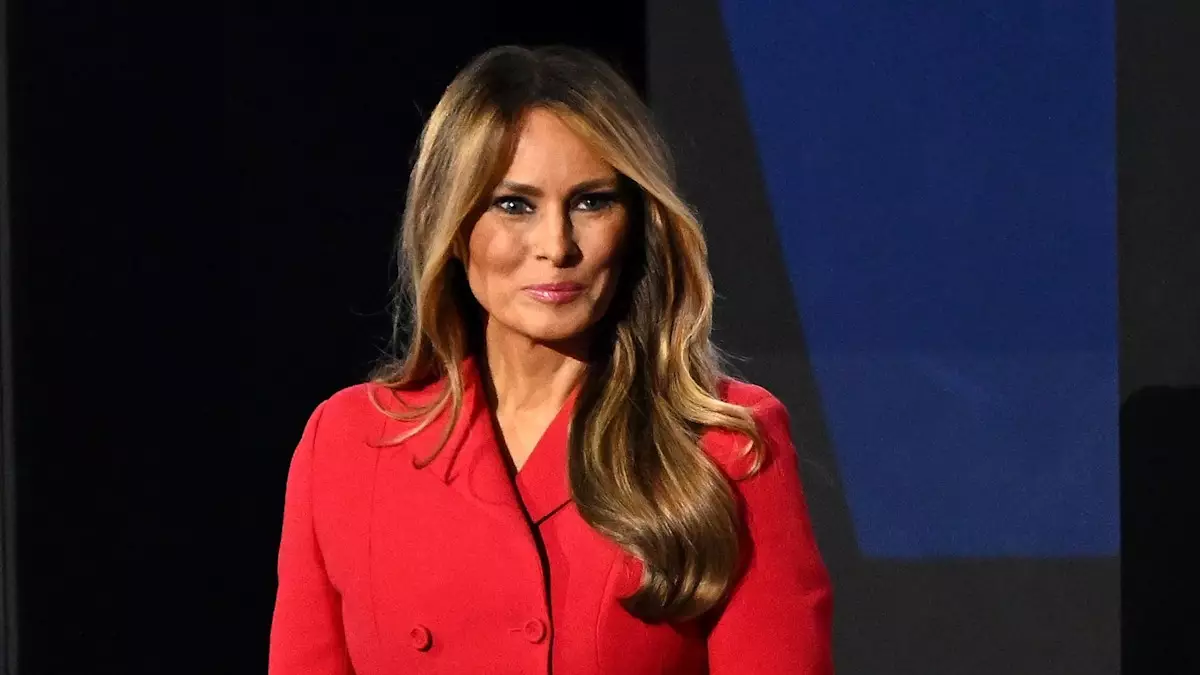Melania Trump has historically navigated her role as First Lady with a purposeful restraint, often shunning the cacophony of political spotlight in favor of a measured presence. However, her recent appearance at the Annual International Women of Courage Award Ceremony in Washington, D.C. captivated the media and public alike, shining a light on her seemingly understated yet impactful style. While she has maintained a relatively low profile during her husband’s administration—reportedly splitting her time between residences in Palm Beach and New York—this outing signaled not only her support for women’s achievements but also reaffirmed her fashion influence in America, even if it comes with a huge price tag.
The event, attended alongside influential figures like Secretary of State Marco Rubio, saw Melania donning a striking $11,000 leopard-print coat designed by Milly Park, a Palm Beach-based designer. This ensemble served as a bold reminder that while she might retreat from everyday visibility, her fashion choices command attention. The luxurious coat is emblematic of her penchant for high-end, tailored garments that speak volumes even in silence. It reflects a characteristic blend of elegance and assertiveness, reinforcing the notion that her style narrative is intentional rather than incidental.
Fashion as a Reflection of Personal Narrative
In navigating her role, Melania has often been criticized or analyzed through the lens of her fashion choices. Observers have noted that her signature style, which tends toward sharp lines and tailored suits, gives insight into her personality and confidence. According to her stylist, Hervé Pierre, Melania remains unapologetically true to her aesthetic—she won’t suddenly swap out refined silhouettes for whimsical floral prints in the name of evolution. Instead, she embraces the consistency of her fashion identity, which emphasizes strength and clarity. This unwavering commitment to her aesthetic decisions indicates a deeper self-assuredness that is often overshadowed by political tumult.
Despite the glitz and glamour surrounding her clothing, Pierre asserts that Melania’s fashion choices are not layered with statements or hidden meanings. This raises an interesting point: do personal style and public attire carry inherent messages, or can they simply be a matter of choice? As dressing becomes a tool for expressing individuality, it’s essential to recognize the personal agency behind those choices. For Melania, there may be no greater message than her confidence in self-presentation—an assertion that individual style can triumph over the narrative shaping the social and political milieu.
Turbulence in Times of Elegance
Melania’s splashy appearance comes at a fraught time for her husband’s administration, marked by contentious political decisions including controversial executive orders and economic backlash leading to stock market declines. It is easy to perceive her lavish attire as an unsettling juxtaposition to the crises facing citizens across the nation. The disconnect between ostentatious fashion and pressing national issues exemplifies a delicate balance for public figures, especially in the politically charged climate that has characterized recent years.
The juxtaposition of luxury against socio-political challenges begs the question: can elegance maintain validity in turbulent times? Melania’s fashion choices may be seen as irrelevant by some, yet they cannot be dismissed outright. They underline how public figures leverage style for personal expression, either as a means of voicing opinions or as a method of disengagement from the chaos around them. Arguably, her ability to garner attention even when deliberately stepping back from the limelight asserts that fashion and identity remain intertwined, stimulating both discussion and critique.
The Role of Fashion in Political Discourse
As Melania Trump navigates the complexities of her role, her style remains a point of contention in political discourse. While some may dismiss her fashion as superficial or trivial, it represents an evolving dialogue surrounding identity, representation, and influence. Even attire chosen without explicit intent can spark debate, blurring lines between fashion as art and fashion as a vessel for communication.
In this layered exploration, it’s critical to appreciate the multifaceted nature of public personas—how the fabric they wear often intertwines with the narratives they represent, willingly or not. Melania’s style may not carry the weight of a manifesto, but it undeniably contributes to the ongoing conversation about what it means to be a woman in power, dressed not solely for the cameras but also in celebration of personal identity. Fashion is more than surface; it is an avenue of interpretation, with every appearance telling a story that reverberates beyond the fabric itself.

